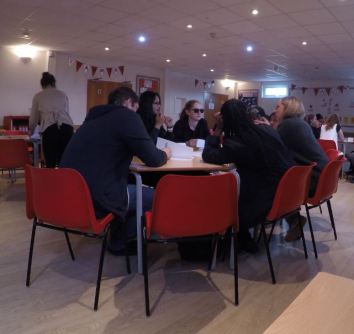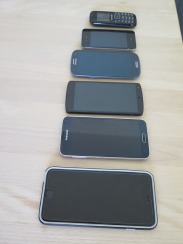In the first half of 2017, our work has been largely defined by the two pilot phases in which we’ve been sharing Oxplore with specific groups and regions. When we haven’t been travelling to schools to meet with young people, we’ve been planning these visits and working out what feedback we most need to shape the development.
Gathering this feedback has been incredibly helpful – and taking the time to pilot Oxplore has been very worthwhile. We have run 12 focus groups with 162 young people, and each one of them has surprised us with their ability to grasp not only what we are trying to achieve, but how we can use the digital tools to achieve our aims. Their digital upbringing was particularly noticeable in our recent visits to the East Midlands where we were discussing UX, interface and technical features. They were clear on what they expected from a website – and many even bandied about terms like ‘OAuth’, ‘CAPTCHA’ and ‘hamburger menu’ like developers!
A challenging aspect of these visits has been coming up with activities that help us to gauge their true feelings in an engaging way while still getting the data we needed. We were clear that the traditional focus group format of sitting around talking was not going to work for our groups – we needed something to keep their attention. We merged our need for qualitative feedback with sessions designed to be both reflective and interactive. To gauge their preferred other websites, they voted in ‘Web Awards’ which not only asked them to reflect on the features of the sites they most like to frequent, but gave us evidence of user interfaces we might seek to emulate. To help us prioritise the development of new features, they spent ‘cash’ (ahem, stickers) on the features stuck up around the room. To help us refine the scope of those features, they looked at site designs and answered prompts about the process of registration, commenting and more.
While collating the outcome of these activities and more, we’ve also been reflecting in the team and with our developers how simply letting the young people loose with a tablet or PC in a computer room is in itself an excellent barometer of how well the site achieves its aims. In many cases we struggled to get the young people off of the site and onto the tasks. In a few schools they even used the Inspect Element function to view the CSS and temporarily edit the site to what they thought it should look like… (more Big Questions about footballers, apparently).

With technical development now back underway, our next task is to ensure that we make the very best of all this input.






 The primary focus of the first consultative group was to get to know our participants better, in particular the way they like to think and the kinds of questions they find most interesting. Just as importantly we’re interested in what devices they use and what they use them for. Participants were asked to bring to the session the device they most commonly use to access the internet. Unsurprisingly all of our young people brought their smartphones with them, with one even bringing a tablet too. Guess that supports our view for
The primary focus of the first consultative group was to get to know our participants better, in particular the way they like to think and the kinds of questions they find most interesting. Just as importantly we’re interested in what devices they use and what they use them for. Participants were asked to bring to the session the device they most commonly use to access the internet. Unsurprisingly all of our young people brought their smartphones with them, with one even bringing a tablet too. Guess that supports our view for